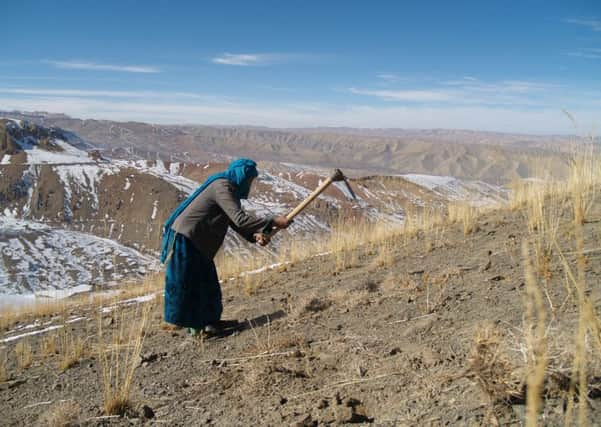Tony Miller: Finding a solution to water shortages would help solve associated problems


In point of fact, frankincense, and myrrh were gifts of great value widely used in religious ceremonies throughout the ancient Mediterranean world. They were imported by camel caravan from southern Arabia, in what might be considered an early example of international trade.
The Romans called the area “Arabia Felix” – happy or blessed Arabia. This covered present day south-west Saudi Arabia, Yemen and western Oman. It was so-called because of its rich agriculture and abundant rainfall as well as being the home of such valuable commodities.
Advertisement
Hide AdAdvertisement
Hide AdWe now know that myrrh is a gum extracted from trees in the genus Commiphora. Myrrh trees are not particularly appealing or garden-worthy except, perhaps, to bonsai enthusiasts and are best likened to stunted hawthorns that have managed to survive in a field grazed by cattle. Frankincense is harvested most commonly from Boswellia sacra, an attractive tree from southern Arabia and Somaliland.


What of Arabia Felix today? Yemen is one of the poorest countries in the world and ravaged by war. Could drought-tolerant indigenous plants, including myrrh and frankincense, play a role in rehabilitating a post-conflict Yemen?
While we are all only too aware of conflicts being played out in countries such as Yemen, Syria and Afghanistan, it should not be forgotten that water shortages are almost always at the root of problems in the region.
In Yemen, for instance, it is estimated that up to 80 per cent of conflicts in rural areas are over water. This directly impacts on all of us. Across the region, because of a breakdown in agriculture through a lack of water, people are moving from the countryside to the towns and, ultimately, migrating. It has been estimated that almost a quarter of migrants entering Europe though Greece come from Afghanistan.
So what might agriculture in post-conflict Yemen look like? At present in Yemen water shortages are massively worsened by the national obsession with qat, an amphetamine-like drug obtained from chewing the leaves of the tree Catha edulis. It has been estimated that qat cultivation consumes anything between 40 per cent and 70 per cent of the total groundwater in Yemen with wells having to be sunk to increasing depths as the limited groundwater runs out.


No one really knows how much water is left but it is highly likely that Yemen will be the first nation to completely run out of water. A post-conflict Yemen self-sufficient in water might see a return to rainwater harvesting and the introduction of drought-resistant crops such as Aloe vera, a high value, labour-intensive crop which recent research at the Royal Botanic Garden Edinburgh (RBGE) has shown to have originated in Yemen, requires little water and could be cultivated in areas where the ground water has been depleted through over-extraction. The global market for Aloe vera products is estimated to be $13 billion.
RBGE has also been working in Afghanistan where it is not only important to provide people with the necessities of life but also to offer them sustainable livelihoods in their home villages.
In Afghanistan, where the majority of the agriculture is rainfed, much foreign aid has been directed towards growing wheat which relies heavily on irrigation but does little to support the majority of farmers.
Advertisement
Hide AdAdvertisement
Hide AdThe reliance on irrigation strikes me as being a high risk strategy – it relies on a constant supply of water at a time when climate change is reducing available water. An alternative and parallel strategy should be to support the use of traditional crops, many of which have local strains which are well-adapted to the drought conditions of Afghanistan and can be grown without irrigation. At the same time, being holistic in its approach, RBGE is investigating the impact of introducing efficient cooking stoves on reducing the cutting of vegetation for fuel on mountains. This directly affects the capacity of the mountains to store water and supply a perennial flow for irrigation.
Long term solutions take time and there remain many challenges for the land of frankincense and myrrh. But it is worth considering, when shopping for Christmas next year, would we be prepared to pay a premium for products using aloe gel sourced from Yemen, continuing the biblical tradition of botanical gifts from Arabia Felix?
Tony Miller is an Associate Researcher, the Royal Botanic Garden Edinburgh